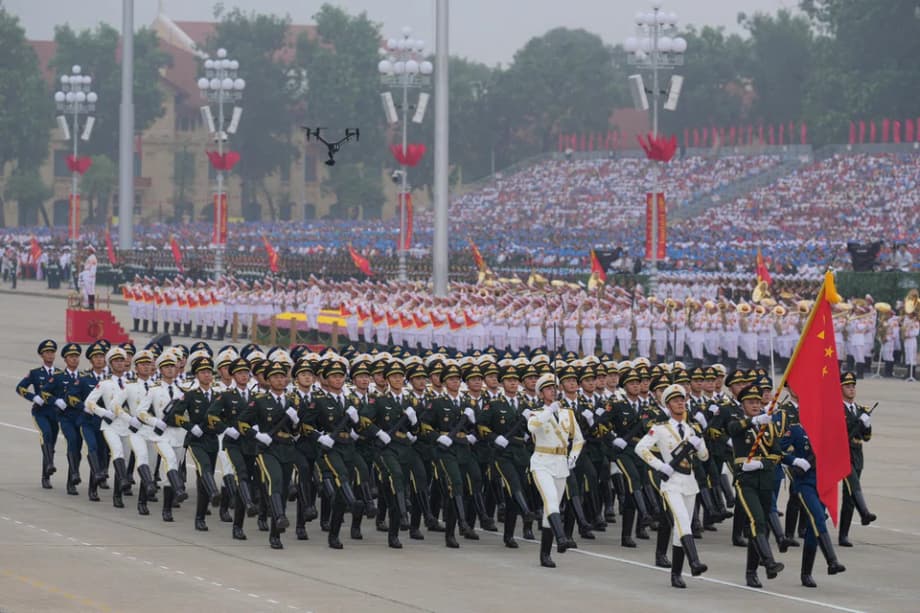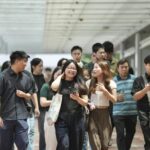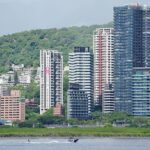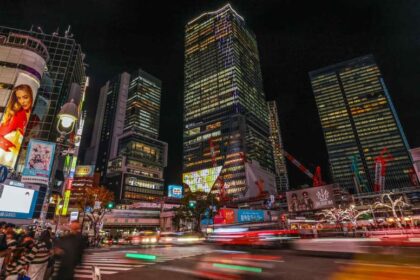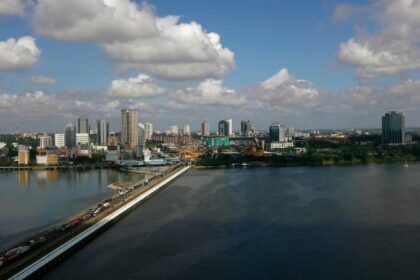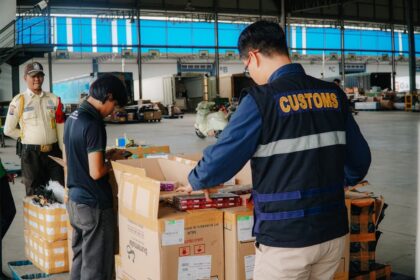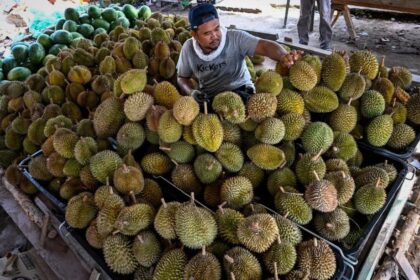A parade, a platform, and a pivot
Rows of young Vietnamese gathered along Hanoi boulevards this September to watch a ceremonial march. The loudest excitement erupted, not for home units, but when the Chinese contingent stepped in time past the crowd. This scene captured a striking change in public mood toward China, a neighbor with which Vietnam has fought several wars and still contests maritime claims. The friendlier tone, strongest among the young and on social media, is giving Vietnamese leaders political space to advance sensitive cross border projects that had long been considered too controversial, including high speed rail links and new special economic zones near the frontier.
Survey data supports the shift. A major poll early in 2025 by the ISEAS Yusof Ishak Institute found nearly three quarters of Vietnamese respondents still prefer the United States as a partner. Yet the share expressing a preference for China is rising faster in Vietnam than anywhere else in Southeast Asia. Online behavior points in the same direction. Searches, social posts, and language study trends show greater curiosity about Chinese society, culture, and opportunities.
Social media is a powerful factor in this change. TikTok had roughly 67 million users in Vietnam in 2024, second only to Facebook in the country. Tests using neutral accounts to avoid algorithmic bias show that searching the Vietnamese term for China on TikTok tends to surface upbeat content, including synchronized drill teams, clean cityscapes, and viral travel clips. Searches for the South China Sea, known in Vietnam as the East Sea, often bring up weather and storm updates or coverage of China Philippines tensions, not Vietnam China friction. TikTok’s algorithm is proprietary and opaque, and outside observers cannot say exactly why users see what they see. The result is a high volume of content that highlights Chinese order, growth, and culture.
At the Hanoi parade, the Chinese soldiers drew sustained attention. One viewer, Ms Le Huyen My, a 22 year old graduate from Ho Chi Minh City who camped overnight to secure a good spot, captured the atmosphere of fascination.
“It was worth the wait. So cool. I admire their discipline,” said Ms Le Huyen My.
Video clips of the march drew millions of views and thousands of comments, many praising precision and pageantry. Reactions on other platforms were more mixed, with Facebook users showing greater skepticism toward both Beijing and Washington.
Analysts caution that the softer tone online may not reflect a deep change in national feeling so much as a shift in what is expressed in public. Dr Nguyen Khac Giang, a Vietnamese political analyst at the ISEAS Yusof Ishak Institute, argues that moderation is shaped by domestic controls more than by a vanishing of grievances.
“Vietnamese youth online sound less strident about China than before, but that owes more to the state’s increasingly tightening control of nationalism than to fading resentment,” said Dr Nguyen Khac Giang.
The difference from 2018 is striking. That year, nationwide protests forced the government to shelve a plan for special economic zones perceived as favoring Chinese firms. Today, state media report on new border zone proposals with little pushback. Mr Nguyen Hung, a scholar at RMIT University Vietnam, frames the change succinctly.
“Economic interests are prevailing over nationalism,” said Mr Nguyen Hung.
Why attitudes are shifting now
Economic forces set the backdrop for Vietnam’s new realism. Years of tariffs and technology restrictions between the United States and China have pushed manufacturers to adopt a China plus one strategy, shifting parts of their supply chain to Vietnam and other neighbors. Factory parks in northern Vietnam have expanded rapidly. One industrial zone developer, Deep C, reported that investment grew from about one billion dollars in 2018 to seven billion dollars seven years later. Apple suppliers now assemble watches and other devices in Vietnam. The United States has become Vietnam’s largest export market and Vietnam’s trade surplus with the United States topped 120 billion dollars last year.
Success brings risk. Policymakers in Washington have scrutinized Vietnam’s role in complex supply chains, concerned that some shipments could be Chinese parts relabeled as Vietnamese. Hanoi has moved to cut some tariffs on American goods, signaled large purchases of U.S. products, and tightened rules on origin labeling to avoid accusations of transshipment. Vietnam’s leaders stress a stable investment environment and a commitment to upgrades in logistics, energy, and digital infrastructure to keep growth on track.
Beijing has also stepped up outreach. President Xi Jinping has visited Vietnam twice in the past two years, and his first regional trip of 2025 included stops in Hanoi, Kuala Lumpur, and Phnom Penh. In Vietnam, the two sides prepared more than 40 cooperation agreements. The visits are designed to keep Vietnam from drifting too close to Washington and to revive plans that link the two economies more tightly.
The project list is ambitious. Among the headline items is a proposed high speed rail corridor running from the border city of Lao Cai to Hanoi and on to the port of Haiphong, a strategic route for trade with southwest China. Early estimates put the Vietnam section at roughly 8.4 billion dollars. Border economic zones and cross border logistics hubs are moving forward as well, a dramatic contrast to the aborted plans of 2018.
Cultural and educational links are growing in tandem. Google searches from Vietnam increasingly focus on Chinese movies, music, and language. In the first quarter of 2025, Vietnam led global registrations for the HSK Chinese Proficiency Test (China’s official exam for non native speakers). The enthusiasm reflects practical considerations too. Companies supplying electronics, textiles, and auto parts to global brands need staff who can work across Vietnamese, English, and Mandarin.
Social media, soft power, and the TikTok effect
What users see matters. On TikTok, suggested videos tied to China often feature pristine skylines, choreographed drills, gleaming high speed trains, and cuisine tours. The imagery is designed to entertain, but it also transmits a message that China is orderly, modern, and competent. This steady stream of positive portrayals appeals to young viewers who came of age long after the border clashes of the 1980s and who judge neighbors by growth prospects and lifestyle appeal rather than by old battlegrounds.
External influence cannot be ruled out. Researchers and platform operators have documented China linked online campaigns using inauthentic accounts to shape narratives in other countries. Investigations have shown operations targeting debates in the Philippines. There is no definitive public evidence that similar efforts are driving Vietnam content trends at scale. The algorithm that chooses what to show is not public, and people’s choices feed the machine. A user who pauses on clips of parades and skylines will get more of the same.
Platform culture also matters. On Facebook, where political debates thrive in text heavy comment threads, skepticism of big powers, including both Beijing and Washington, appears more common. On TikTok, where short video dominates and politics is less central to the experience for many users, content about travel, dance, and discipline can flourish without pushback.
Admiration has limits. Vietnamese pride and memory run deep. At the parade in Hanoi, 21 year old student Nguyen Hue Van voiced both fascination and fidelity.
“The Chinese troops look fascinating, but our soldiers are still the best,” said Nguyen Hue Van.
Bamboo diplomacy and a careful balancing act
Vietnam’s foreign policy is often described as bamboo diplomacy. The metaphor reflects flexibility and resilience, bending without breaking as the winds of great power competition shift. Vietnam deepens political and economic links with China while managing serious security concerns in the South China Sea. It balances by expanding ties with other major partners too, including the United States and Japan.
The approach was on display during Xi Jinping’s state visit in December 2023. The two sides announced a plan to build a Vietnam China community with a shared future, a phrase that underlined closeness but stopped short of language that would suggest alignment at the cost of autonomy. Dozens of agreements covered party to party contacts, cross border infrastructure, maritime coordination, and support for elements of the Belt and Road initiative.
At the same time, Hanoi elevated partnerships with Washington and Tokyo in 2023. Cooperation agendas include supply chain security, semiconductors, rare earth elements, clean energy, and coast guard capacity. The balance is intentional. Vietnam seeks to broaden its economic base and preserve strategic room to maneuver.
Vietnam’s negotiating history with China also suggests why the middle path can sometimes produce results. After the Cold War, Vietnam and China settled long standing land and Gulf of Tonkin boundaries during a period when Hanoi was less tied to a single outside patron. Some Vietnamese strategists contend that heavy reliance on an extra regional power can harden Beijing’s position, while a neutral stance can open doors to compromise. That lesson informs current choices.
Security tensions have not vanished
None of the new warmth erases real disputes at sea. Vietnam continues to challenge China’s expansive nine dash line claim and defends its exploration rights on its continental shelf. Patrol boats and coast guards shadow each other across contested waters. The Vietnamese navy and coast guard are modest but improving, and outside partners have supplied equipment and training. Episodes at sea still test nerves in both capitals.
Public sentiment in China toward Vietnam is mixed but trending toward acceptance. A recent survey of Chinese citizens by respected research institutions found about half describing Vietnam as a friend, a better rating than Japan or the United States. Those same surveys show a Chinese public highly suspicious of Washington and Tokyo, which shapes how Chinese users read news about the region. These attitudes frame how both sides interpret disputes and goodwill gestures.
Vietnamese society also carries the imprint of history. The 1979 border war and years of skirmishes on land and at sea left deep scars. Streets in Hanoi honor generals who fought invading Chinese armies. That memory coexists with a pragmatic calculation that trade and investment can lift incomes and reduce the risk of conflict. State management of nationalist expression, combined with economic opportunity, helps explain the current tone.
Economics at the border
Border economic zones and new transport corridors seek to turn a long frontier into an engine for growth. Vietnamese planners see advantages in clustering logistics, electronics assembly, and light industry near crossings where parts and components move quickly. The proposed Lao Cai Hanoi Haiphong rail line would funnel cargo from Yunnan and northern Vietnam to a deep water port, easing congestion on roads and cutting transit times.
Deeper integration carries risks. Over dependence on imported inputs can leave Vietnamese factories vulnerable to supply shocks. Policymakers in the United States worry that some shipments from Vietnam carry too little local content. Hanoi has started tightening rules on labeling and is working to increase domestic value added to address those concerns. Officials believe that higher local content, better energy infrastructure, and simpler customs procedures will both reduce external pressure and raise productivity.
Trade policy in Washington adds uncertainty. New tariff proposals could apply to a wide range of imports, and Vietnam sits near the top of lists of countries with large surpluses. Some economic forecasts suggest that sharply higher tariffs on Vietnam could shave growth by more than a percentage point in a given year. Vietnam’s leaders have set demanding growth targets and are racing to attract new investment in higher value manufacturing to avoid a slowdown.
Key Points
- Vietnamese youth are expressing warmer views of China, driven in part by TikTok content and cultural curiosity.
- Survey data still shows a strong preference for the United States, yet support for China is rising faster in Vietnam than elsewhere in Southeast Asia.
- A friendlier mood has allowed sensitive projects to move forward, including a proposed Lao Cai Hanoi Haiphong rail corridor and new border economic zones.
- China and Vietnam signed dozens of cooperation documents during recent high level visits, and President Xi Jinping has visited Hanoi twice in two years.
- Vietnam’s export surge to the United States makes it vulnerable to new tariff actions, prompting steps to raise domestic value added and tighten origin rules.
- Vietnam continues a bamboo diplomacy strategy, expanding ties with China while elevating partnerships with the United States and Japan.
- Maritime disputes in the South China Sea persist, and both sides manage frequent patrols and occasional confrontations.
- Interest in Chinese language and culture is growing fast, with Vietnam leading global registrations for the HSK exam in early 2025.
- Analysts say state controls over nationalist expression help explain the friendlier online tone, even as historical caution toward China remains.


